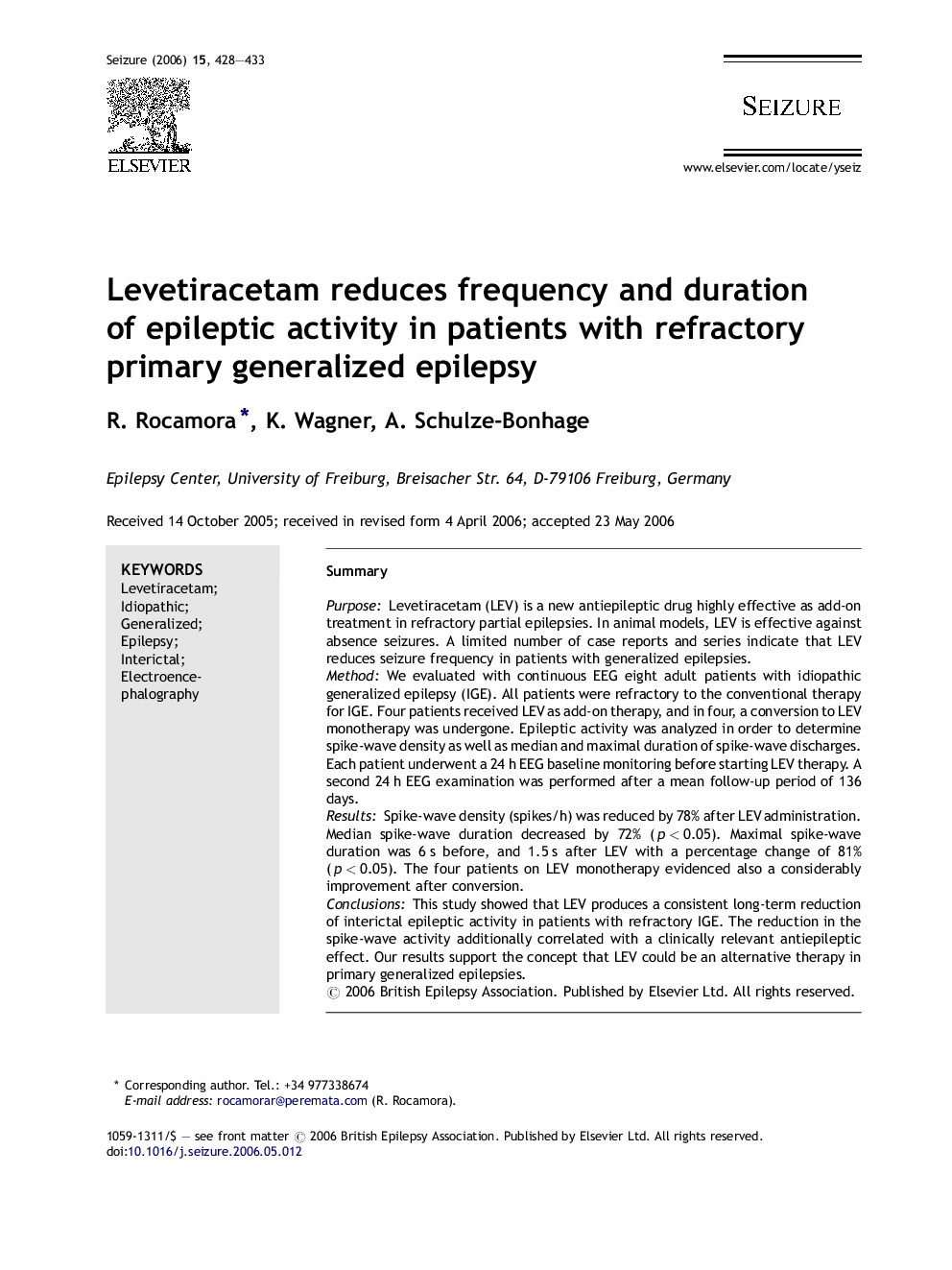| Article ID | Journal | Published Year | Pages | File Type |
|---|---|---|---|---|
| 341261 | Seizure | 2006 | 6 Pages |
SummaryPurposeLevetiracetam (LEV) is a new antiepileptic drug highly effective as add-on treatment in refractory partial epilepsies. In animal models, LEV is effective against absence seizures. A limited number of case reports and series indicate that LEV reduces seizure frequency in patients with generalized epilepsies.MethodWe evaluated with continuous EEG eight adult patients with idiopathic generalized epilepsy (IGE). All patients were refractory to the conventional therapy for IGE. Four patients received LEV as add-on therapy, and in four, a conversion to LEV monotherapy was undergone. Epileptic activity was analyzed in order to determine spike-wave density as well as median and maximal duration of spike-wave discharges. Each patient underwent a 24 h EEG baseline monitoring before starting LEV therapy. A second 24 h EEG examination was performed after a mean follow-up period of 136 days.ResultsSpike-wave density (spikes/h) was reduced by 78% after LEV administration. Median spike-wave duration decreased by 72% (p < 0.05). Maximal spike-wave duration was 6 s before, and 1.5 s after LEV with a percentage change of 81% (p < 0.05). The four patients on LEV monotherapy evidenced also a considerably improvement after conversion.ConclusionsThis study showed that LEV produces a consistent long-term reduction of interictal epileptic activity in patients with refractory IGE. The reduction in the spike-wave activity additionally correlated with a clinically relevant antiepileptic effect. Our results support the concept that LEV could be an alternative therapy in primary generalized epilepsies.
